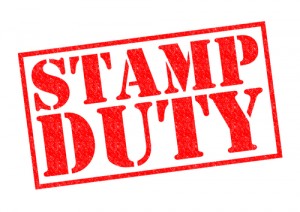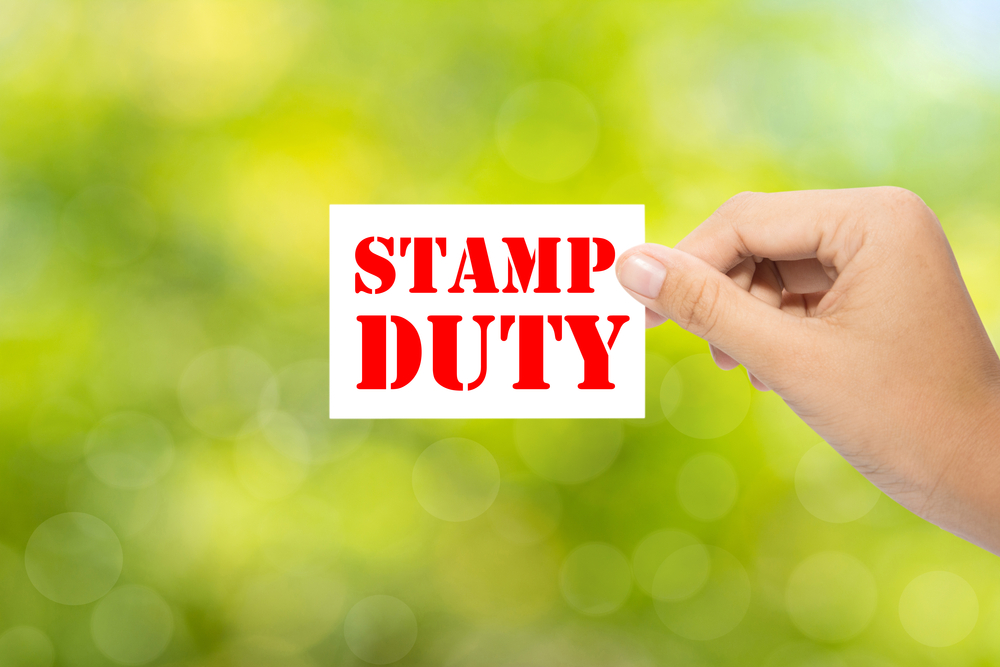In a surprise move by Chancellor George Osborne in his Autumn Statement, Stamp Duty Land Tax (SDLT) has been revised, making it less expensive for the majority of home buyers. Joanne Atkin explains
The reform of stamp duty has been widely welcomed by most people with a sigh of “better late than never”. It has been 11 years since stamp duty was last changed but in that time house prices have risen from an average of £140,000 to £187,000, according to Halifax.
 Cries from everyone in the industry, including What Mortgage, to restructure this despised and unfair tax had fallen on deaf government ears, until now.
Cries from everyone in the industry, including What Mortgage, to restructure this despised and unfair tax had fallen on deaf government ears, until now.
The government says that 98 per cent of home buyers will be better off under the new system, or put another way, anyone buying a property for less than £937,500 will pay less Stamp Duty Land Tax (SDLT).
That’s all well and good but house buyers will still have to give the government a hefty chunk of their hard-earned money for the privilege of homeownership if their home costs more than £125,000.
The new rates came into effect on 4 December 2014 and the system follows a similar pattern to the proposed Scottish system. In Scotland the new UK-wide SDLT rates will apply until 1 April 2015; after that Scotland will have its own Land and Buildings Transaction Tax which will replace stamp duty (see fact box opposite).
Changes
The reform of SDLT moves from a ‘slab’ structure to a marginal system. Under the old rules, you paid tax at a single rate on the entire property price. Now, you pay different amounts depending on the tax band – a bit like income tax.
For example, if you bought a house for £185,000, under the old rules you would have paid 1 per cent tax on the full amount – a total of £1,850. Under the new rules, you pay nothing on the first £125,000 and 2 per cent on the remaining £60,000, which works out as £1,200, a saving of £650.
Similarly, if you buy a home for £260,000, instead of paying 3 per cent on all of it, resulting in a payment of £7,800, you now pay nothing on the first £125,000, 2 per cent on the next £125,000, and 5 per cent on the final £10,000, which equals £3,000, a saving of £4,800.
| Old SDLT Bands | New SDLT Bands | ||||
|---|---|---|---|---|---|
| From | To | Change | From | To | Change |
| £0 | £125,000 | 0% | £0 | £125,000 | 0% |
| £250,000 | 1% | £125,001 | |||
| £250,001 | £500,00 | 3% | £250,001 | £925,000 | 5% |
| £500,001 | £1,000,000 | 4% | £925,001 | £1,500,000 | 10% |
| £1,000,001 | £2,000,000 | 5% | £1,500,001+ | 12% | |
| £2,000,000+ | 7% |
Welcome move
The Council of Mortgage Lenders (CML) welcomed the announcement and applauded the move away from the distorted slab system. Paul Smee, the trade body’s director general, said: “This fundamental reform has been a long time coming, but better late than never. Although there are losers as well as winners, the vast majority of mortgaged transactions will benefit from lower tax as a result of this move.”
CML data suggests that, among mortgaged transactions over the past year:
- 21.6% were for less than £125,000
- 47.9% for £125,001-£250,000
- 29% for £250,001-£925,000
- 1.1% for £925,001-£1.5 million
- 0.4% for over £1.5 million.
The proportion of mortgaged transactions that would pay more tax under the new system is around 1.5 per cent, the CML has estimated.
Nationwide is another strong advocate of stamp duty reform. Its chief executive Graham Beale commented: “The introduction of a marginal charging structure will be much fairer for the majority of home buyers, whether first-time buyers or home movers, easing their tax burden and reducing the overall cost of buying, when finances are already stretched.”
Stamp duty does not take into account regional variations in house prices and is a flat, across the country tax. Brian Murphy, head of lending at Mortgage Advice Bureau (MAB), said: “Stamp duty still remains an imperfect tax in that it makes no regional allowance for differing house prices.
“Buyers in the country’s more expensive regions will still pay more stamp duty than those in cheaper areas for properties of a similar size and quality. This can be a significant burden to those with home owning aspirations in London and the South East – but their outlook has still improved as a result of the Chancellor’s announcement.”
Treasury coffers
And of course, SDLT fattens up the Treasury’s purse. In the tax year 2013/14, the Treasury collected £9.3 billion in stamp duty, up from £6.9 billion the year before.
London is hit the hardest, contributing close on half (44 per cent) of stamp duty revenue in England in 2013/14 and if you include the South East, the proportion rises to two-thirds.
In Greater London, the number of transactions over £1 million is almost 10 per cent, or one in 10 households. And in Prime Central London, this increases to over 50 per cent of households so one in every two will be affected by higher stamp duty.
Thresholds
The old slab system meant that there were few properties on the market at just above the tax band thresholds. Buying a home for £250,000 would incur stamp duty of £2,500 but go £1,000 over that and your tax bill would have jumped up to a whopping £7,530.
Naomi Heaton, chief executive of London Central Portfolio (LCP), specialist residential investment advisors focusing on Prime Central London, said: “It is envisaged that the market will be freed up extensively at the £250,000 mark where, according to LCP’s research, the number of sales between £250,000 and £260,000 are just 10 per cent of those between £240,000 and £250,000.
“The cliff-edge has forced people to take prices lower than they had hoped or wait up to 2.5 years to achieve the true value of their property. This should now allow people to trade up and get first-steppers onto the ladder.”
LCP points out that the 3 per cent stamp duty threshold at £250,000 was set 14 years ago in 2000 and has not moved since. A property of that value then would be equivalent to one worth £750,000 today.
Unless stamp duty is pegged to house price inflation, it will not take many years for a far greater number of people to fall into this new stamp duty trap.
Buying a property worth more than £937,500 is generally where buyers will be worse off with the new tax system rather than the old one. However, Heaton says there is a small purple patch between £1 million and £1.125 million where buyers can make a saving of £5,750 under the new regime.
Heaton said the people who will suffer most are those buying between £1.5 million and £2 million, who have tried to buy under the £2 million mark to avoid the (previous) 7 per cent SDLT level and potential Mansion Tax. The Labour party wants to introduce an annual tax on properties valued at more than £2 million.
How to calculate how much you have to pay
If you are in the process of buying a property, generally your solicitor or conveyancer will work out the stamp duty you have to pay.
What Mortgage has an online calculator to help you work it out for yourself – just click on the Mortgage Calculators icon on the home page at www.whatmortgage.co.uk.
How to pay stamp duty
The way you pay stamp duty is not changing. You must submit a stamp duty return and pay within 30 days of completing the sale of your property. You must submit a return even if you are not due to pay any stamp duty on the purchase price, unless the property costs less than £40,000.
It is your responsibility to ensure that the return is completed on time, but most people employ a solicitor or a conveyancer to complete the return for them.
On receipt of a valid stamp duty return, HMRC issues a certificate which allows you to register your title to the property at the Land Registry, or in Scotland at the Registers of Scotland.
[box style=”6”][/box]
Scotland to replace stamp duty in April
In Scotland the rules are changing and for the first time in 300 years the Scots will have their own system of taxing property transactions. Scotland will remain within the UK Stamp Duty Land Tax system until 1 April 2015 when the Land and Buildings Transaction Tax replaces it.
Proposed new tax rates are set to benefit first-time buyers and those at the lower end of the housing market. The Scottish government says the new rates will take 5,000 additional house purchases out of tax by ensuring that nobody will pay tax on the first £135,000 of their house purchase – £10,000 higher than the current stamp duty threshold, meaning that no tax will be payable on 45 per cent of transactions.
Finance Secretary John Swinney said that a couple buying their first home for £140,000 will pay £100 under the new system, £1,300 less than the old stamp duty system. A family buying a new home for £260,000 will pay £3,300 under the new (Scottish) transaction tax – that’s a saving of £4,500 compared to stamp duty. However, under the new SDLT Scots will pay £3,000 up until the new rules start in April.
Philip Hogg, chief executive of industry body Homes for Scotland, said that buyers purchasing homes over £325,000 are set to be worse off under the new Scottish proposals. He said: “We have already raised our concerns that this risks stagnating the market by detrimentally impacting the middle and upper levels and called for the introduction of an additional band between £250,000 and £500,000 that would enable Scotland to remain competitive with the rest of the UK.”




